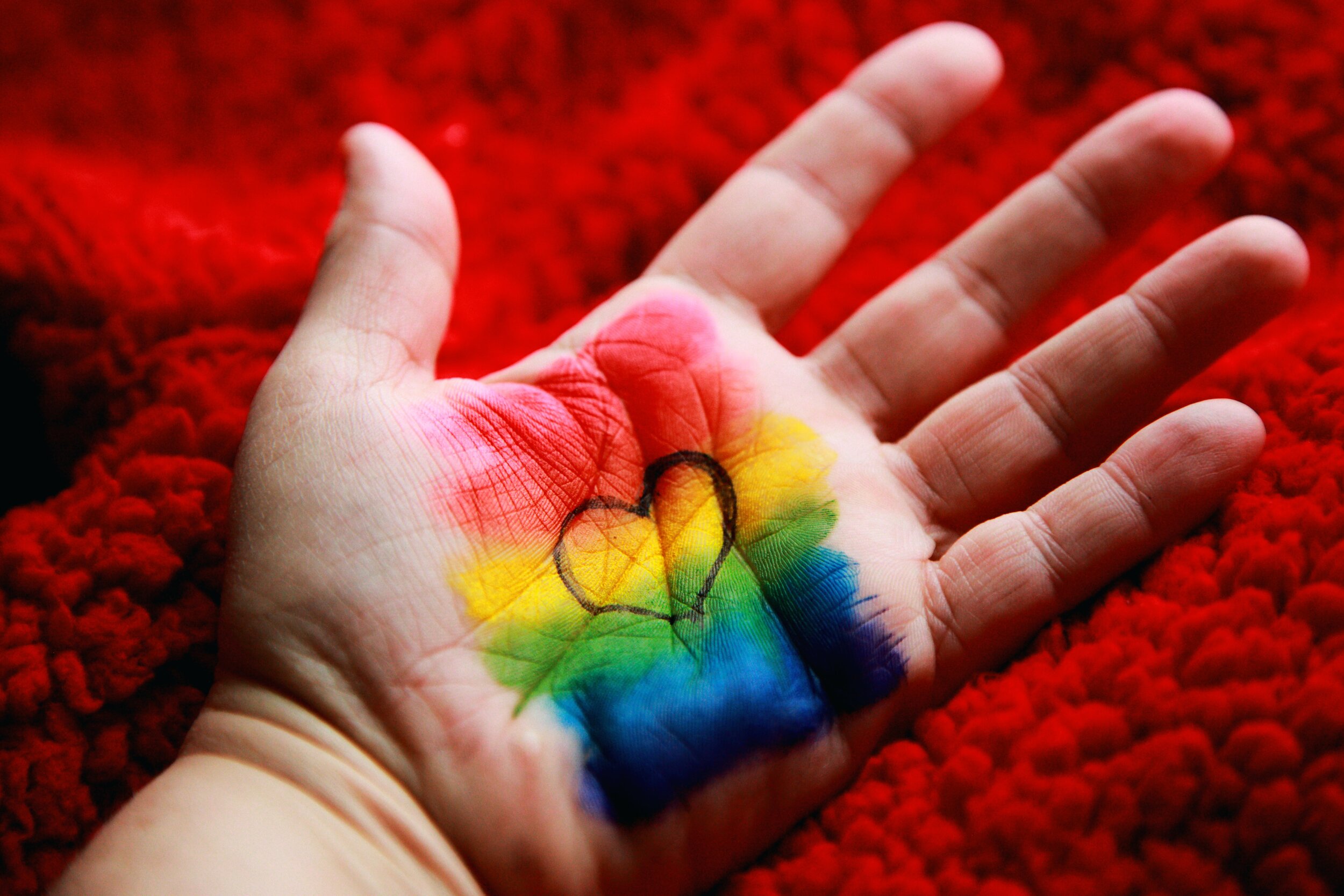Susan Maasch’s Story:
When my child, Kyle, was six years old, he whispered in my ear that he
needed surgery. I was shocked. His tone was very serious. He told me he
was a boy and he needed help. Like most parents, I assumed this was
probably a phase. But a phase is not ongoing, consistent and persistent. Once
he uttered these words out loud, Kyle was determined. I finally understood.
This was ten years ago and there were almost no resources. The pediatrician
wanted to support us but did not know where to turn. We were left on our
own.
As a very resourceful person, I found the one or two resources available in
the country. I decided to found the Trans Youth Equality Foundation so that
other parents did not have to navigate this journey alone. I have since met
many parents who wanted to support their kids and others who refused to. I
have seen tragedy as a result. I refuse to let my child lose hope. Though it
was very tough to witness my child suffering discrimination at school, at the
local park, and in our community, we also received much love and support.
As a young adult, my child has expressed that, without the acceptance he
had with family, and without medical transition, he would not be alive today.
We believe him.
We are fortunate. Holidays for our family have been very happy times. We
have a very small family and everyone was immediately accepting of our
child. While widespread acceptance might be the case for you, we know this
is not the case for many of TYEF families. Using their combined stories,
gathered over the years, we came up with some hints for making the
holidays friendly, warm and fun for everyone.
Susan Brand's Story:
Twenty-two years ago, I totally missed the signs of my young daughter’s
true gender identity. She was a girl born into a boy’s body. Jessica’s penis
was purple, bruised from repeatedly slamming the toilet lid down upon it.
When I questioned her, she matter-of-factly replied, “I don’t want it.”
Because I was a single mother, I reasoned that her behavior was simply due
to the fact that she was going through a brief phase in wanting to act and
look more like me, including having a female body. Our pediatrician agreed.
We were right about her desire for female genitalia but dead wrong about
the brief phase.
Two years ago, at age 22, Jessica underwent sexual reassignment surgery in
San Francisco. I’ve never seen her happier nor more herself. She was a girl
all along, but couldn’t bring herself to tell me for 16 long years. Now, with
the exciting and potentially stressful holiday season approaching, we’ll share
some additional stories and suggestions for your trans child or youth from
our first-hand, school of hard knocks lessons as Moms of trans kids.
First: Preparation. If your trans child has come out to you, but not to
others, it’s best to prepare family and friends in advance of a large holiday
gathering. Remind them to use the correct pronouns—him/her or he/she or
gender neutral “they.” If you have a host relative who gathers the family for
holiday events, ask them for support with the unaccepting relative. Let them
know you will only attend if you are reassured they will respect your child.
Ask them to talk to this relative.
Be prepared for a variety of reactions from friends and relatives. Be patient
with them. This is new and often unexpected news to them. Sometimes, it
may take months or even years for friends and relatives to adjust to your
child’s new identity and to accept your child as they are. For example, Susan
Brand’s late mother, who later accepted the fact that her grandson was really
her granddaughter, reacted to our startling news with a stated conviction that
Jessica required the services of an exorcist! We understood that her
traditional approach to gender roles and her religious convictions interfered
with what was, to her, revolutionary. We told other family members and
friends individually, either by email, phone, or in person, but never “outed”
Jessica. We only told others with her permission or asked her to tell them,
herself.
Second: Clothing. Allow your trans child or youth to dress as they wish for
the holiday gatherings. If your trans boy child decides to wear short hair and
a baseball hat, so be it. If your trans girl child wants to wear a pink dress and
hair bow, enthusiastically support her. Role modeling your pride in your
child or youth and their appearance and behaviors will pave the way for
others to do the same.
Third: Respect Freedom of Choice. Collaborate on a gift list and shop together
online or in stores to make the holidays a joyful time of being oneself. Consider
gender neutral toys like puzzles, stuffed animals, board games, and books. Make a
day to go shopping and enjoy exploring with your child what they like. If they are
newly transitioned, they might be exploring their real interests and tastes at
this time. Get excited about this new journey with them. Be a good listener.
Ensure that you inform family and friends about gender-appropriate or
gender-neutral gifts. When purchasing a gift for a gender non-conforming child,
ask them or their parents what they want. Check out Amazon Wish List online
and tell the child to add items they would like. Tell them you will choose
from the list and surprise them. Be aware that sometimes surprises that
you choose without your child’s input may backfire.
When Jessica was two, we attended a preschool Christmas Breakfast,
culminating with a visit from Santa and gifts for children. While
little girls opened their voluptuous Barbie dolls, I was smug in the
knowledge that I’d chosen the perfect gift for Jessica—a bright red fire truck
with macho little firemen, a three-foot expanding ladder, and a real siren. To
my confusion, when Jessica tore off the wrapping paper of her boy’s gift, her
reaction was loud wailing and hiding under the table for 20 minutes. Nothing
would calm her down. “I wanted a Barbie!” were her only words. She
sobbed inconsolably during the whole ride home.
Fourth: Beware of Safety. Be mindful of the physical safety of the toys
your trans child buys or receives. For her seventh birthday, Jessica’s aunt
bought her a toy carpentry kit, complete with a miniature sharp-toothed saw.
Years later, Jessica revealed to me that she tried to saw off her offending
parts. My walking down the stairs and proximity to her brought a timely halt
to her near castration. 14 years later, Jessica’s acceptance as the girl she is
and her sexual reassignment surgery brought her the sought-after release and
the freedom she craved.
Fifth: Start New Holiday Traditions. Make sure that holidays feel safe and
comfortable for your trans child. If things don’t work out well in your
“coming out” efforts, make sure your trans child knows that, although you are
frustrated and sad, you are looking forward to creating new holiday
traditions. Plan together to design these new traditions. Celebrate change,
love, acceptance and strength. Make it magic, and look forward to the
new. Remember your chosen family and friends and invite them to join you.
Sixth: Reach Out. Join trans groups or others who are like-minded in
holiday celebrations. Look into your local and/or regional LGBT or
transgender support organizations for holiday gatherings. Building
community is a great way to show your child that we redefine family by
looking within our community as well.
Summary:
Choose the best plan that will make the holiday fun and comfortable for you
and your trans child. For us, this gender journey has been challenging, but
also beautiful. We have learned a lot about differences, respect, love, and
ally-ship. We have learned about giving back to the community by helping
other kids and families. We want everyone to know that we are just as in
love with our children as you are with yours. We are so thankful for everyone
who has stood with us and continues to support us. At this holiday season,
we express gratitude to you, our families and friends, and especially to our
beloved trans children. You are among our lives' richest treasures.
Susan Maasch / Director
Trans Youth Equality Foundation
contact@transyouthequality.org
www.transyouthequality.org
facebook: trans youth equality foundation
Susan Trostle Brand, D.Ed. / Professor of Education and Social Justice
University of Rhode Island
Consultant and Advocate, Trans Youth Equality Foundation
www.transyouthequality.org
Susan Maasch is the founder and Executive Director of the national non-profit Trans
Youth Equality Foundation. She is a presenter at national conferences for transgender
rights, an advocate for transgender youth and their families, and the director of the
popular summer and fall camps for transgender children called TYEF Camp. Susan
has educated people on transgender youth issues for the past ten years, and this year alone served
almost 2,000 individuals. Susan is the author of articles and chapters addressing the trans youth
population, and is also often interviewed by the press about important issues relating to the well
being of transgender youth. She is also the proud mother of a transgender young man who is
thriving at college and loves life.
contact@transyouthequality.org
Susan Trostle Brand, D. Ed.
Susan Trostle Brand is the proud mother of a 24-year-old trans daughter, Jessica. She is a
professor of Education and Social Justice at the University of Rhode Island and, along
with her daughter, Jessica, frequently presents at regional and international conferences
and universities on transgender issues. Jessica and Susan are featured in an upcoming
documentary entitled “What I’m Made Of,” scheduled for release in 2017. At URI, Dr.
Brand teaches Education and Social Justice “Grand Challenge” courses and serves on the
President’s Diversity Task Force Panel, the President’s Commission on LGBT and the
LGBT Faculty Fellows Group. Dr. Brand is also the author and co-author of several
articles, textbook chapters, and books addressing underserved populations and is writing a textbook
on social justice. Dr. Brand specializes in literature suitable for young trans children
and youth. She serves as an LGBT advisor for school districts in Rhode Island.
In her free time, Dr. Brand spends quality time with her three young daughters and
three misbehaved cats.














